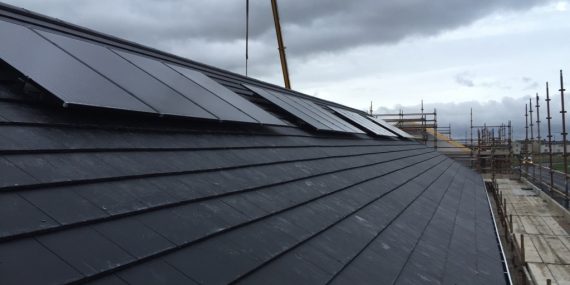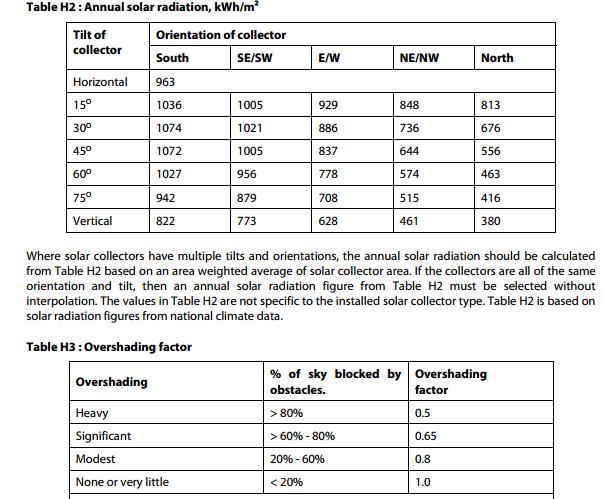Using Solar PV to comply with Part L

Solar Photovoltaic systems are one of the best ways to achieve Part L of the building regulations in Ireland.
Under Part L of the building regulations, a new home must generate a certain amount of its energy from renewable sources. Solar PV is economical, easy to install, has no moving parts, has minimal ongoing servicing requirements, and comes with a long warranty.
To achieve the minimum Part L standard using Solar PV, a home must generate 4 kWh of electricity for every m² of floorspace, per year.
To calculate this there is a standardised “DEAP” Part L calculation:
0.80 x kWp x S x ZPV
- The 0.8 figure is a constant
- kWp (kilowatt peak) is the total kw rating of the system, the theoretical ‘peak’ output of the system. e.g. If the system has 4 x 270 watt panels, then it is 4 x 0.27kWp = 1.08kWp.
- S is the annual solar radiation from Table H2 (depending on orientation and pitch).
- ZPV is the overshading factor from Table H3.
DEAP is the Dwellings Energy Assessment Procedure.

Example Part L calculation
A new home is 200m², and requires 4kWh per m² to achieve Part L of the building regulations – therefore it needs to generate at least 800kWh of solar electricity per year.
A rough rule of thumb, in Ireland, on a south facing roof at average roof slope (30°-40°), is that each kW of Solar PV installed will generate around 850kWh per year. Use this rule of thumb to estimate the amount of kW needed, and use the DEAP calculation to verify it.
In the example we will use 4 x 270 watt panels, which is 1080 watts or 1.08kWp. The roof is south facing, and has a 30° pitch, so ‘S’ from table H2 is 1074. There is no shading. The calculation would be:
0.8 x 1.08kWp x 1074 x 1 = 927 kWh Therefore, 4 panels is more than enough to meet the regulations.
Using 3 x 270w panels in this instance would only generate 696 kWh, so not enough to meet Part L.
Full tables and details here – https://www.seai.ie/energy-in-business/ber-assessor-support/deap/
We can help you with your calculations, and because we stock panels of various wattage and type, we can come up with a solution that most suits your project.
Part L is a minimum requirement and in many instances it is prudent and cost effective to install more PV panels than the regulations insist on. When the scaffolding is up and the PV installation team is on site, that is the most economical time to put the right size of PV system on your roof.
Installation of Solar PV is sometimes not required for Part L, when other renewable technologies are used – this can commonly be the case when efficient heat pumps are used to heat the property. Although Solar PV may not be required, Heat Pumps and Solar PV can be very complementary technologies, and Solar PV can help reduce the costs of running a heat pump.
Part L in Apartment Blocks
Solar PV can also be used on apartment blocks to achieve the Part L requirement for each individual apartment. As the rooftop is common to an apartment block, it is not always easy or practical to run cables back to each individual apartment from this common rooftop. A Solar PV system can be sized, by adding together the m² of each apartment within the block and using the Part L calculation, and this single PV system is then connected to the landlord/communal area supply.
